Blackend Bricked Pheasant
Go back to all recipesI'm a sucker for Cajun Food, but if I had a favorite Cajun cooking technique, it'd be Blackened food! While not a traditional creole cooking method, it did originate in New Orleans. Give me some Blackened fish any day of the week and you'll see a happy man! That being said, I wanted to do a Blackened Bird recipe to post on Gundog Central. Blackening is a method of cooking where you cover fish, chicken or some other protein with butter then generously coat with spices and herbs, finally it's placed on a hot skillet where the butter and spices form a black crust, and while it looks like burnt food, it's not the same thing. This recipe would be great by itself, or served with some rice or cheesy grits, but I'm making this Blackened Bricked Pheasant to use in another recipe, a Blacked Pheasant Jambalaya that I'll be posting later!
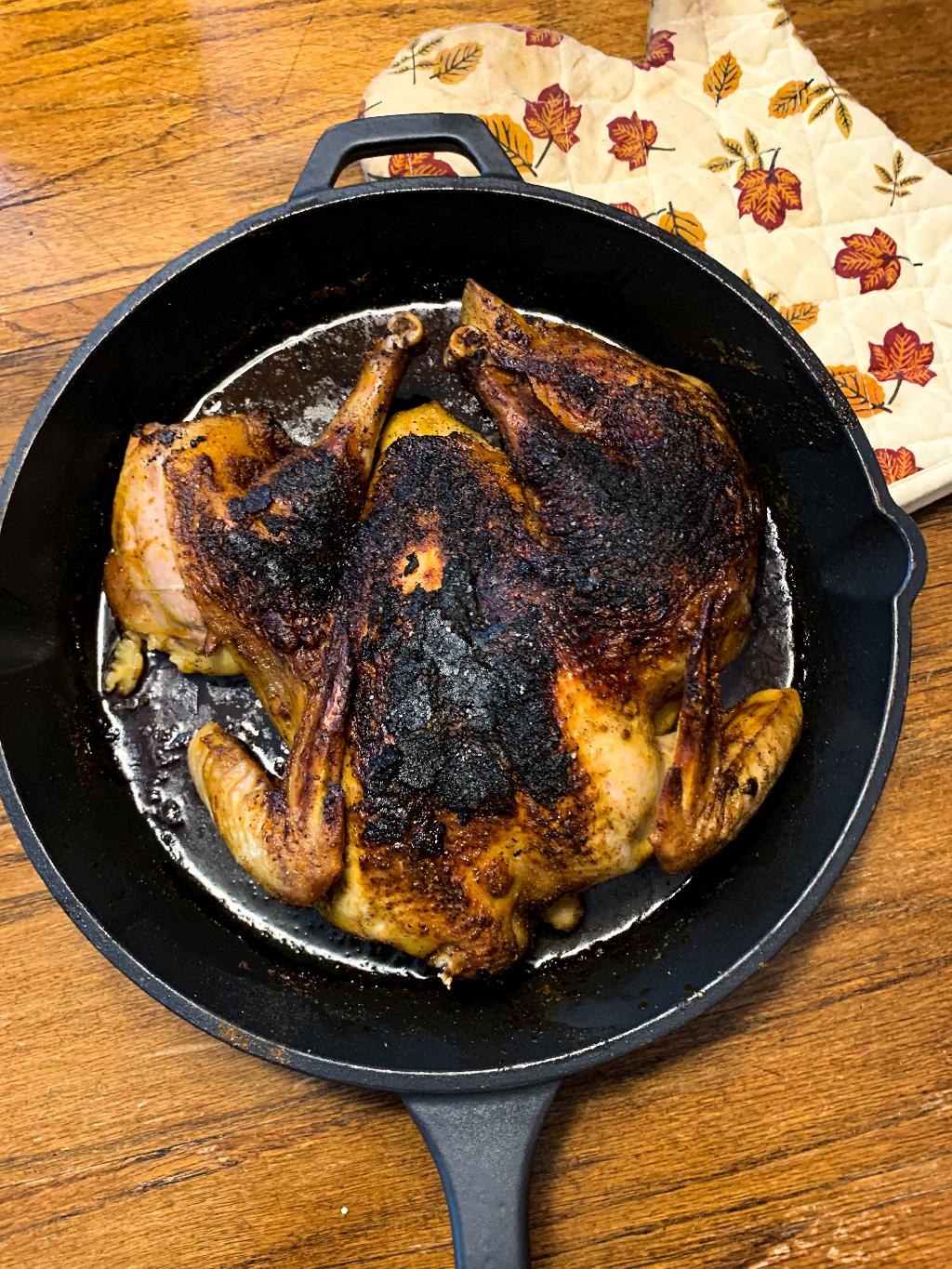 I started this recipe with a simple brine then allowed the birds to sit in the brine for four to six hours, in the refrigerator. I wouldn't advise skipping this step, as it will help prevent the bird from overcooking, while also keeping the inside of the bird flavorful and moist. After brining the birds, it's important to get the skin as dry as possible, so bloat the pheasant skin with paper towels, then place back in the refrigerator for another hour or so to dry. It's also important to preheat the oven beforehand, because we'll actually cook the bird in the oven, only using the stove top to form the blackened crust. When the pheasant skin is dry and you're ready to start cooking, make sure that you're using an oven safe skillet, cast iron is best. We'll need to spatchcock our bird in order to allow it to lay flat in the skillet, we need all that skin making contact with the skillet. Spatchcocking is a method of cooking where you cut out the birds spine with a pair of kitchen shears, then crack the breast bone, this allow the bird to lay flat. Add a tablespoon of butter to the skillet and allow it to melt and start smoking, it should be screaming hot before you ever place your bird in it. Coat the bird all over with butter and generously cover with the blackening spice mixture. You want as much of the skin as possible to come into contact with the hot skillet, I used a couple of bricks from the backyard, wrapped in aluminum foil, to weigh the bird down, pressing it firm against the hot cast iron skillet. You could also use another heavy skillet to press down on the bird. Allow to cook only a few minutes before flipping the bird over, then move straight to the oven. Be forewarned, if you attempt this in your house, be prepared to deal with the smoke.
I started this recipe with a simple brine then allowed the birds to sit in the brine for four to six hours, in the refrigerator. I wouldn't advise skipping this step, as it will help prevent the bird from overcooking, while also keeping the inside of the bird flavorful and moist. After brining the birds, it's important to get the skin as dry as possible, so bloat the pheasant skin with paper towels, then place back in the refrigerator for another hour or so to dry. It's also important to preheat the oven beforehand, because we'll actually cook the bird in the oven, only using the stove top to form the blackened crust. When the pheasant skin is dry and you're ready to start cooking, make sure that you're using an oven safe skillet, cast iron is best. We'll need to spatchcock our bird in order to allow it to lay flat in the skillet, we need all that skin making contact with the skillet. Spatchcocking is a method of cooking where you cut out the birds spine with a pair of kitchen shears, then crack the breast bone, this allow the bird to lay flat. Add a tablespoon of butter to the skillet and allow it to melt and start smoking, it should be screaming hot before you ever place your bird in it. Coat the bird all over with butter and generously cover with the blackening spice mixture. You want as much of the skin as possible to come into contact with the hot skillet, I used a couple of bricks from the backyard, wrapped in aluminum foil, to weigh the bird down, pressing it firm against the hot cast iron skillet. You could also use another heavy skillet to press down on the bird. Allow to cook only a few minutes before flipping the bird over, then move straight to the oven. Be forewarned, if you attempt this in your house, be prepared to deal with the smoke.
Ingredients
Pheasant Brine
Blackened Seasoning
Bricked Pheasant
Instructions
Blacked Bricked Pheasant
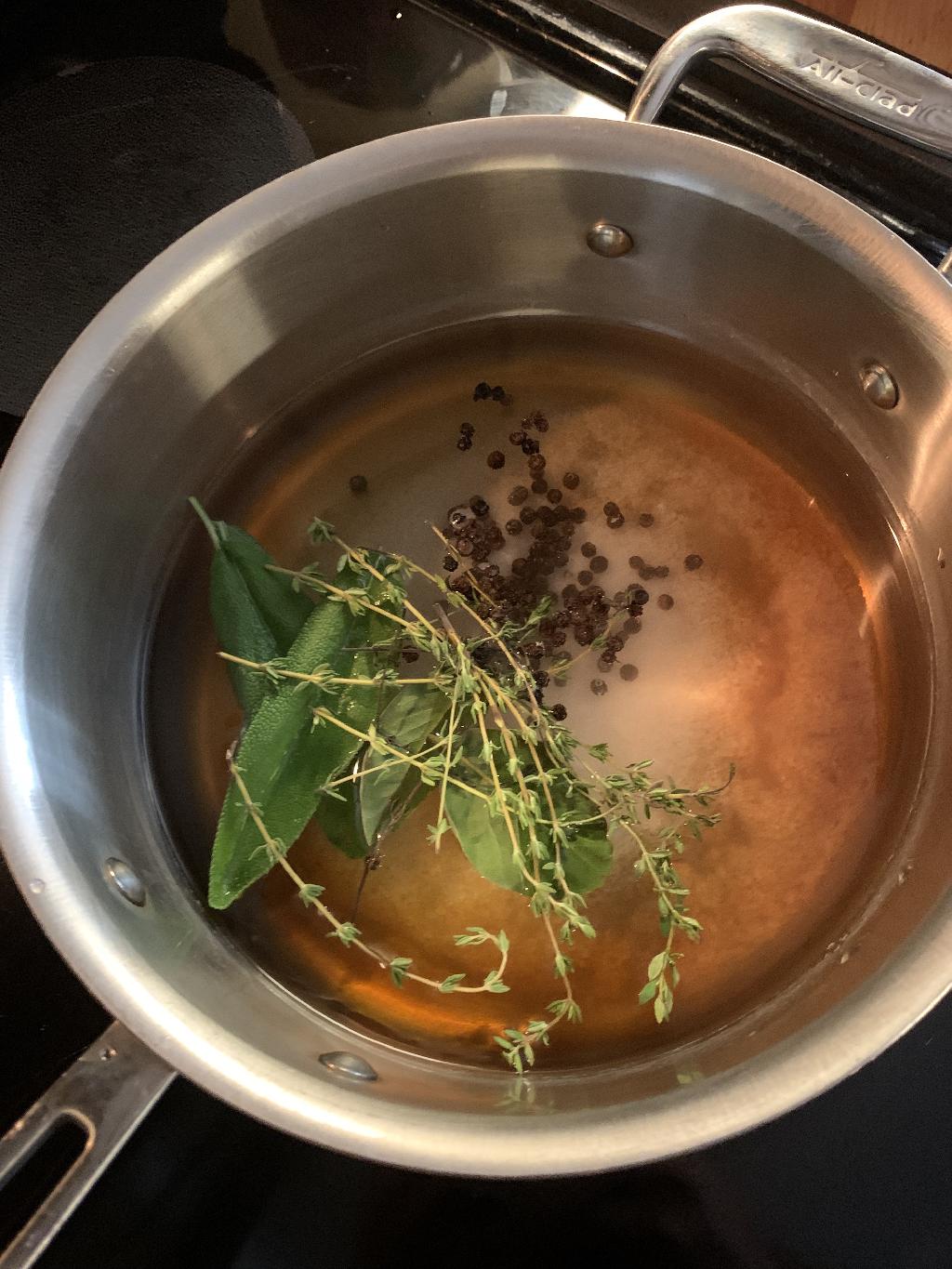
Step #1 Add 4 cups of water to sauce pot. Set heat to high. Add light brown sugar, Kosher salt, peppercorn, bay leaves, sage and Thyme.
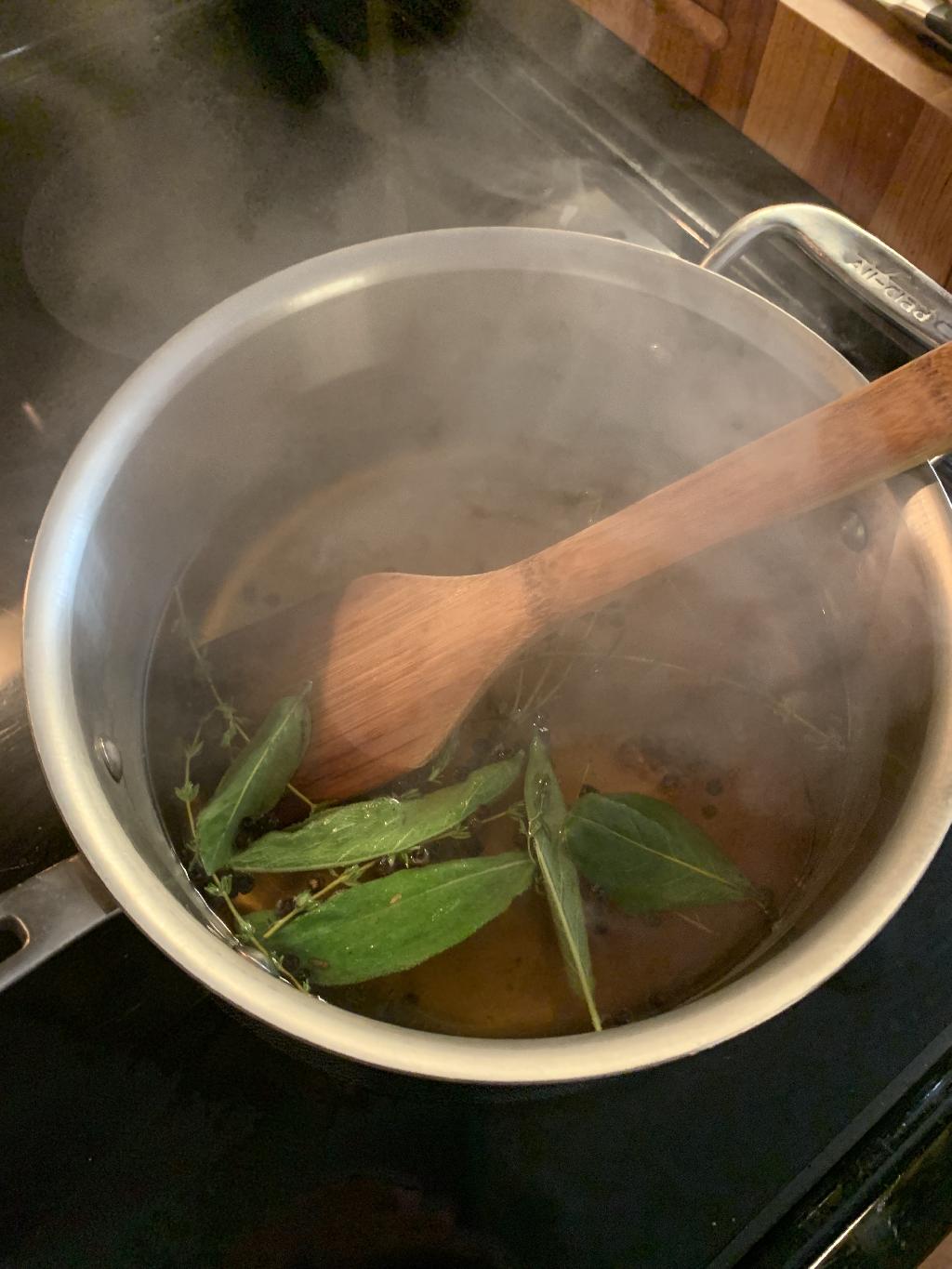
Step #2 Allow to reach a boil, then reduce heat to a simmer. Allow to simmer for ten minutes.
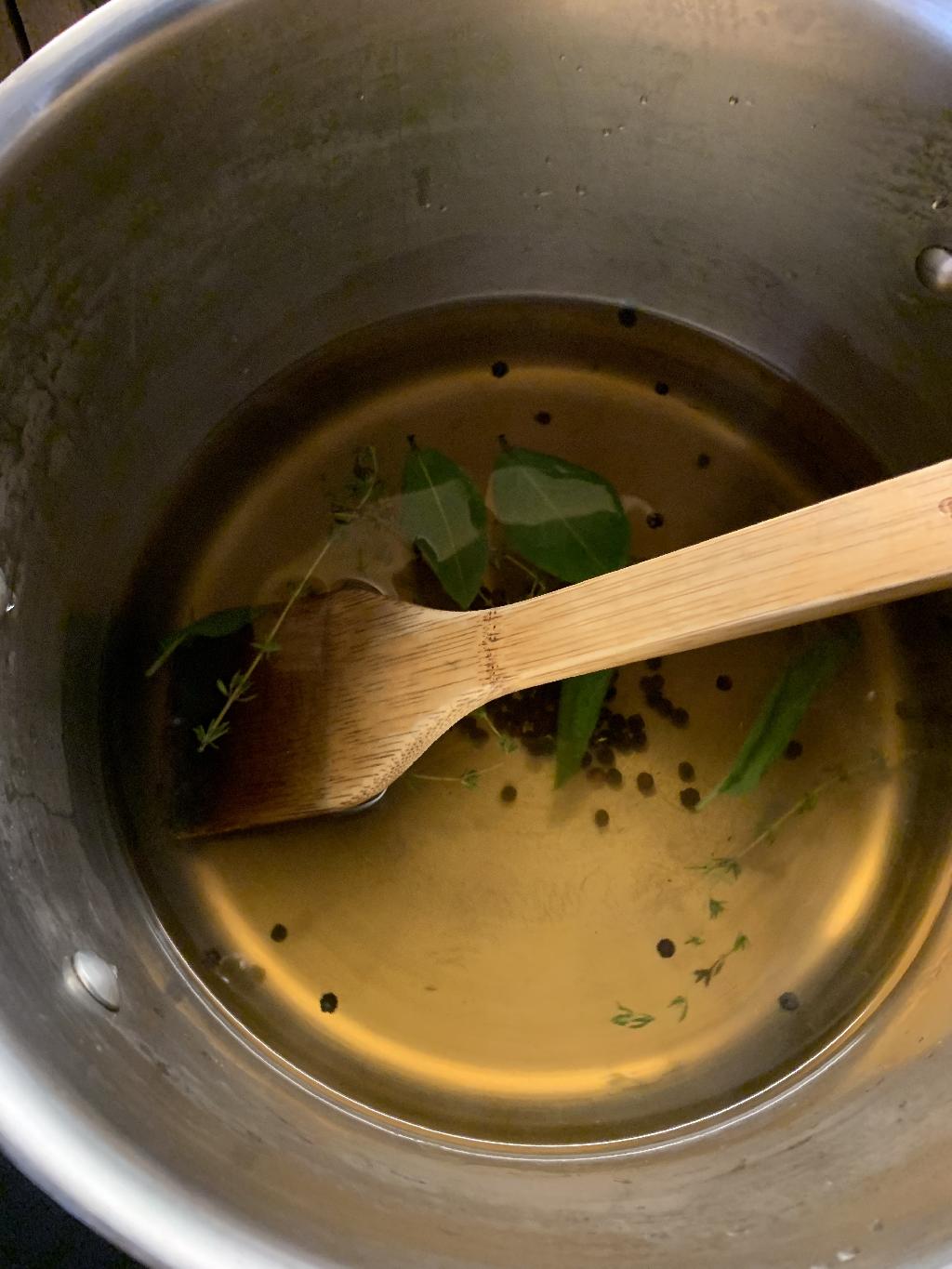
Step #3 Remove from heat. Pour mixture into a large stock pot. Add 4 cups more of cold water and allow temperature to fall.
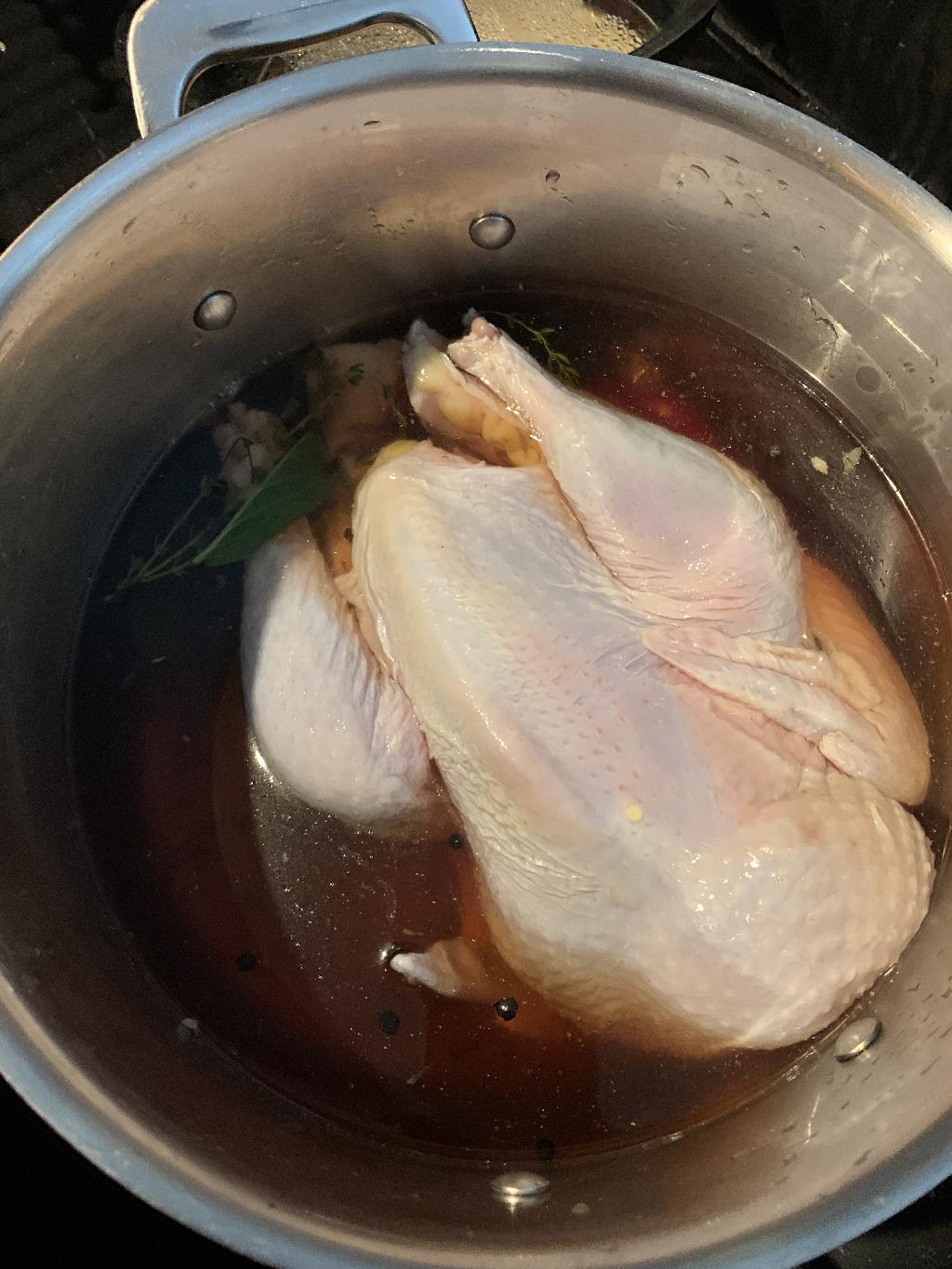
Step #4 Place in refrigerator to accelerate cooling. Once the liquid is cool to the touch. Add whole pheasant and place in the refrigerator for 4 to 6 hours.
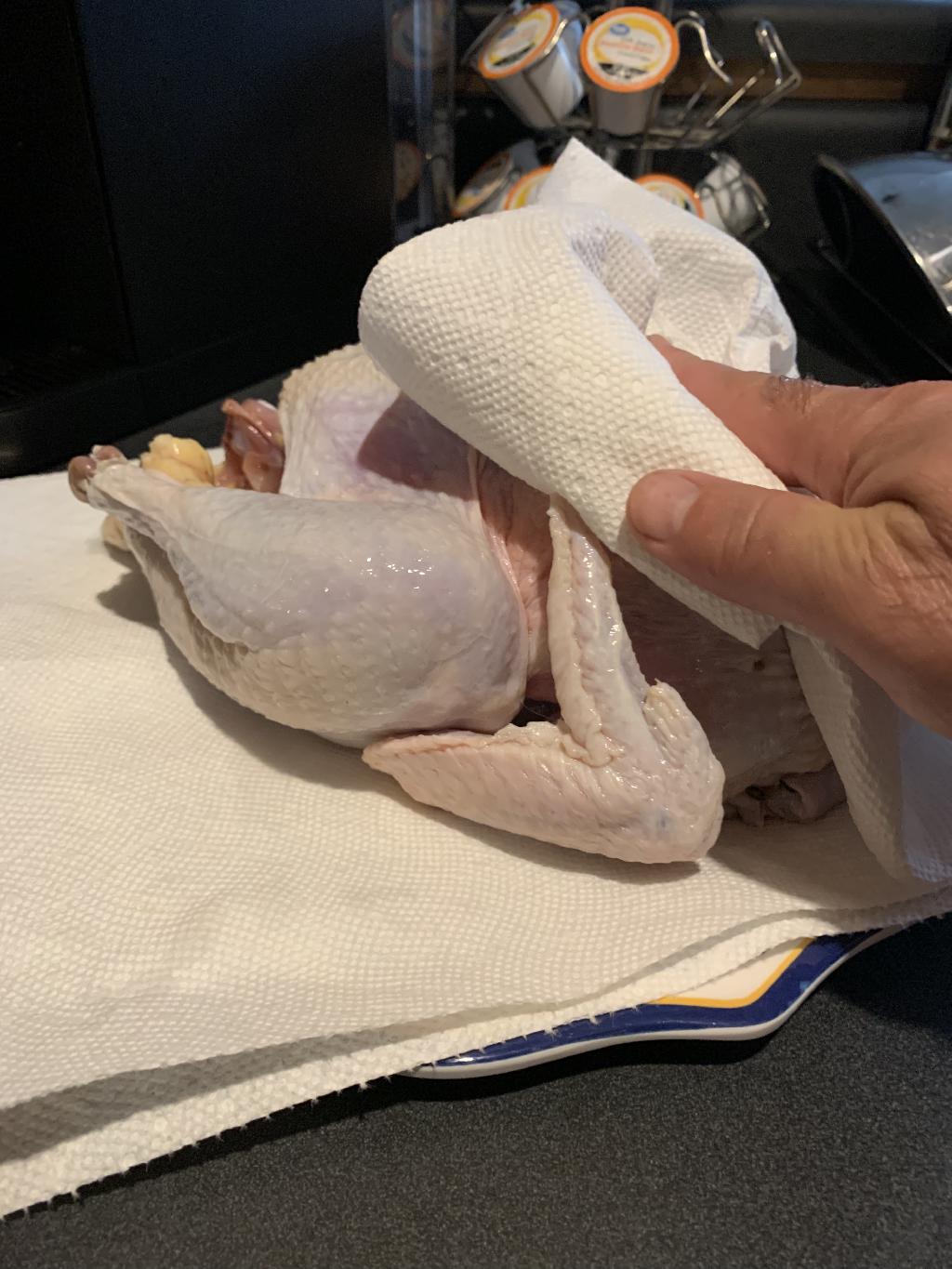
Step #5 Remove pheasant from brine and pat dry with paper towels.
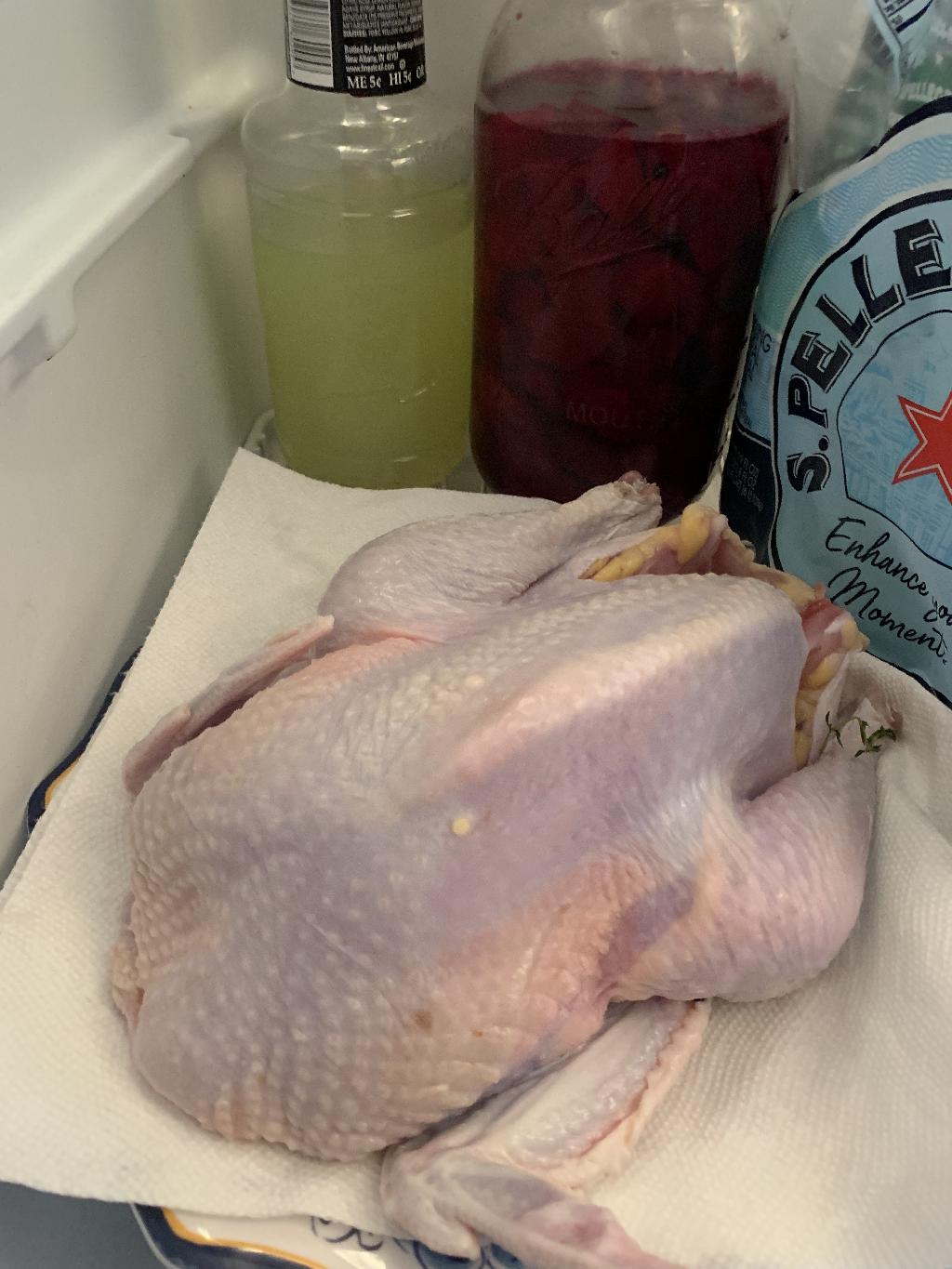
Step #6 Place pheasant back in fridge for another hour to allow skin to dry.
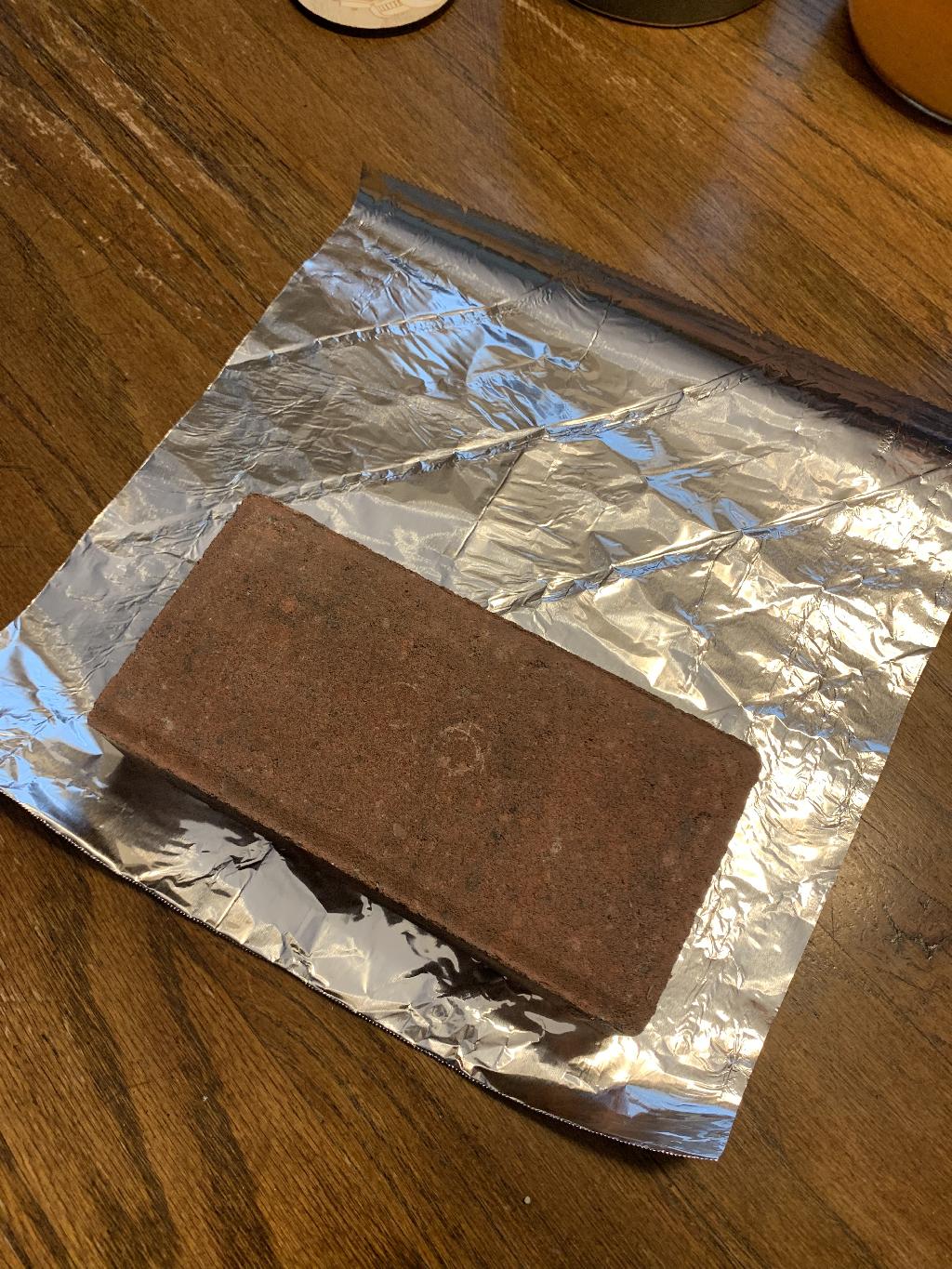
Step #7 While the pheasant skin is drying, wrap a heavy brick or two in aluminum foil.
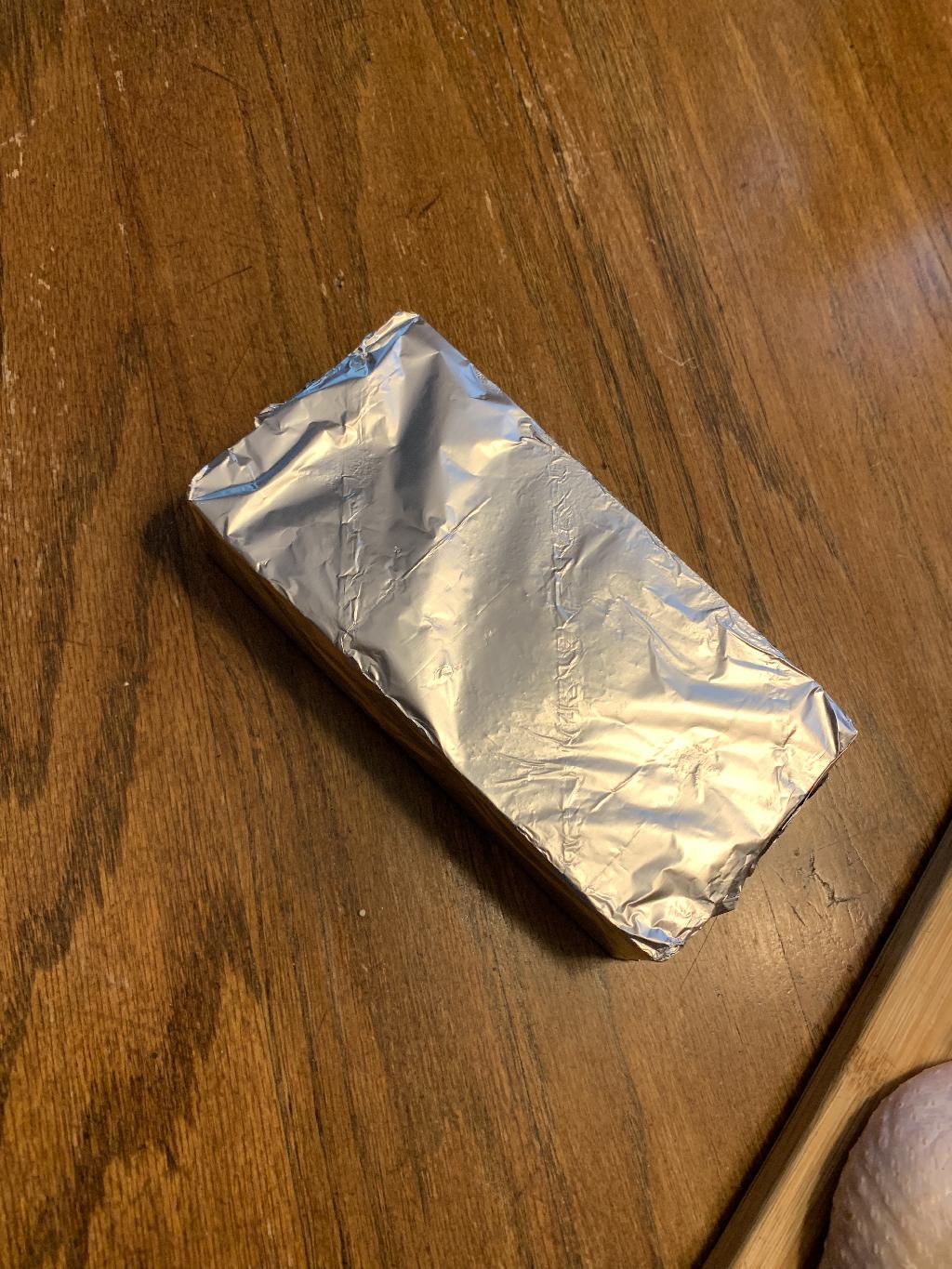
Step #8 We'll use these, or another heavy cast iron skillet to place on top of the birds while they cook. Making sure as much of the skin comes in contact with the skillet as possible.
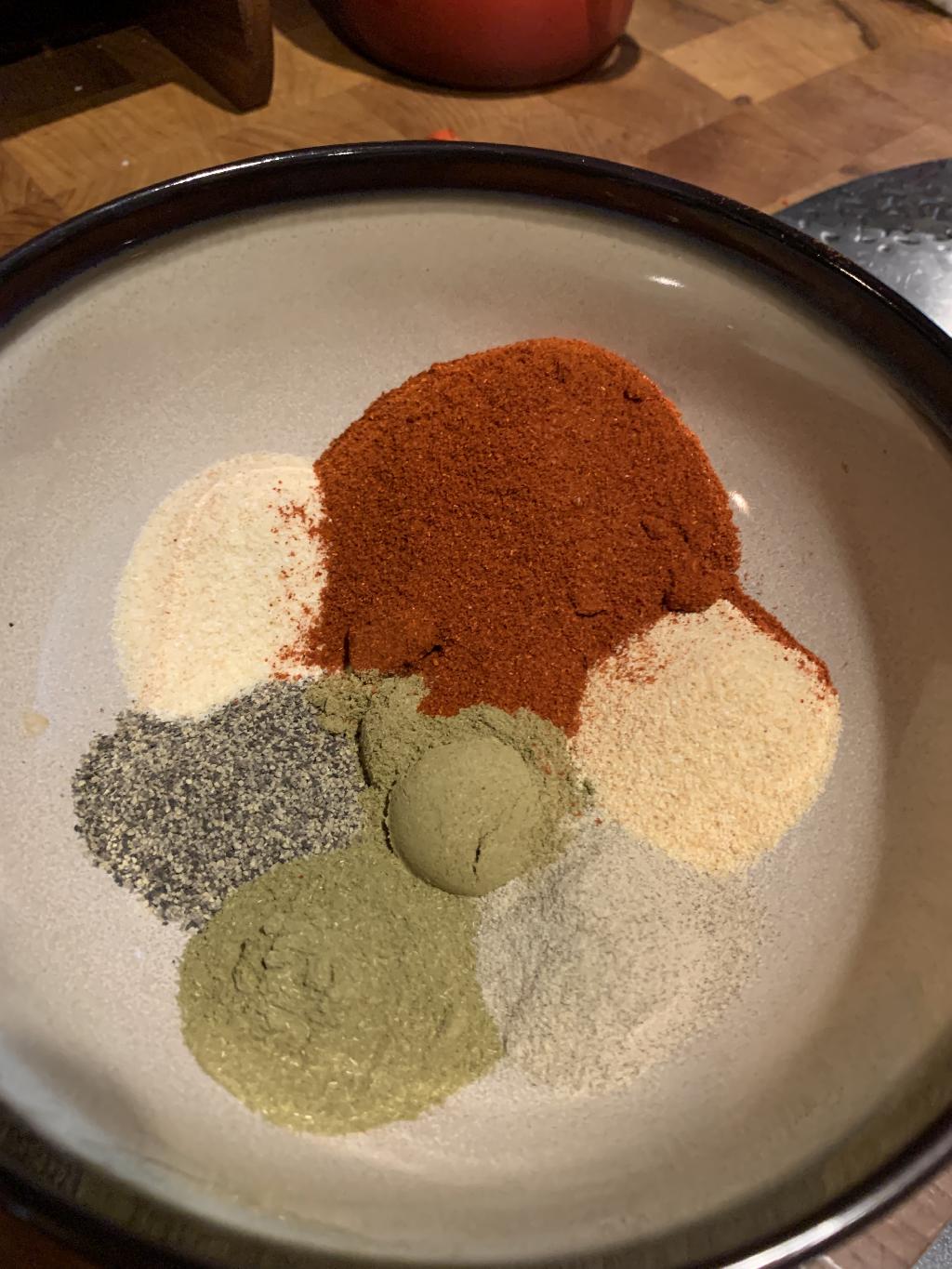
Step #9 Measure out all the ingredients for the blackening spice.
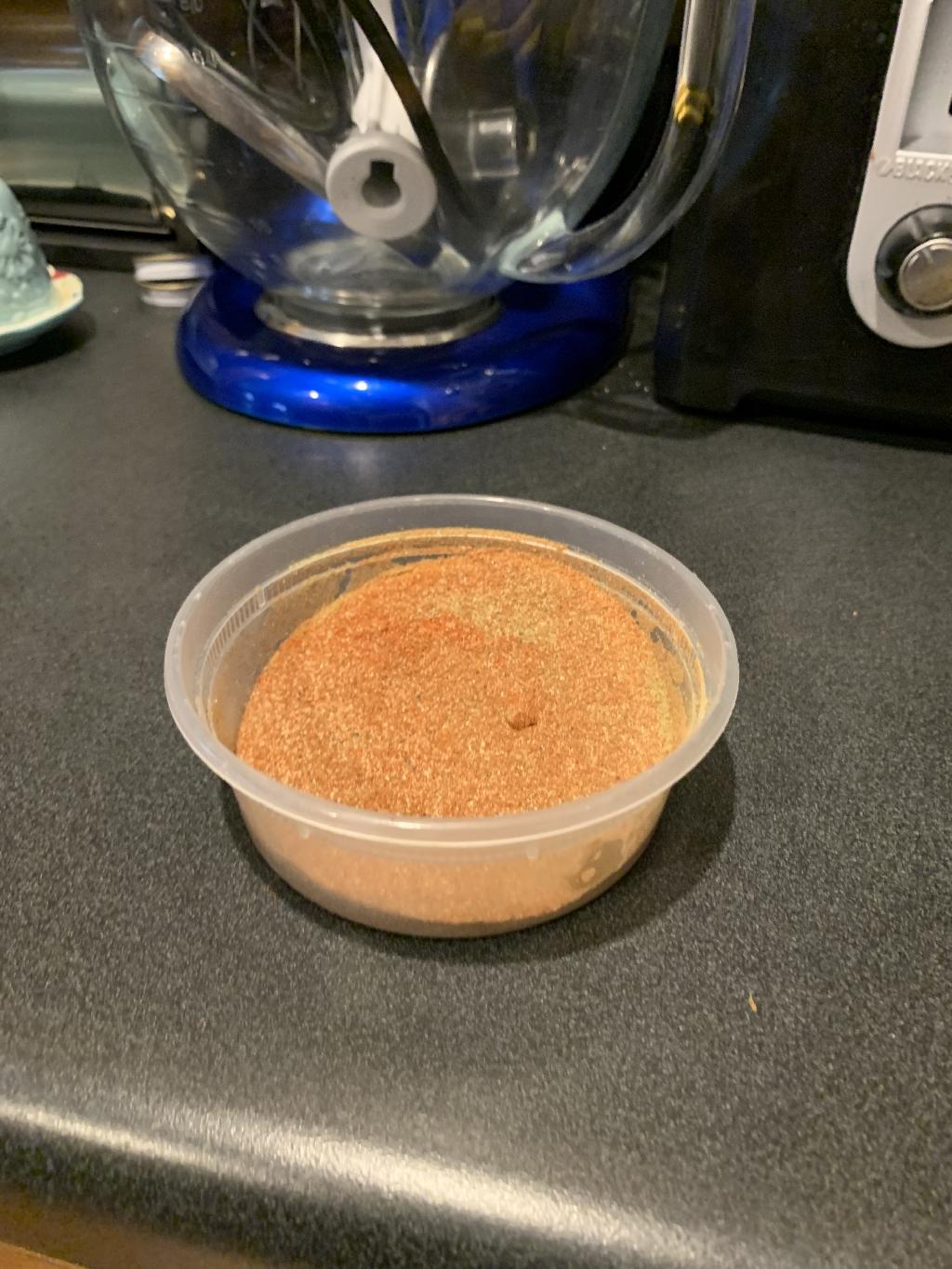
Step #10 Dump it into a plastic container that has a lid and give it a good shake.
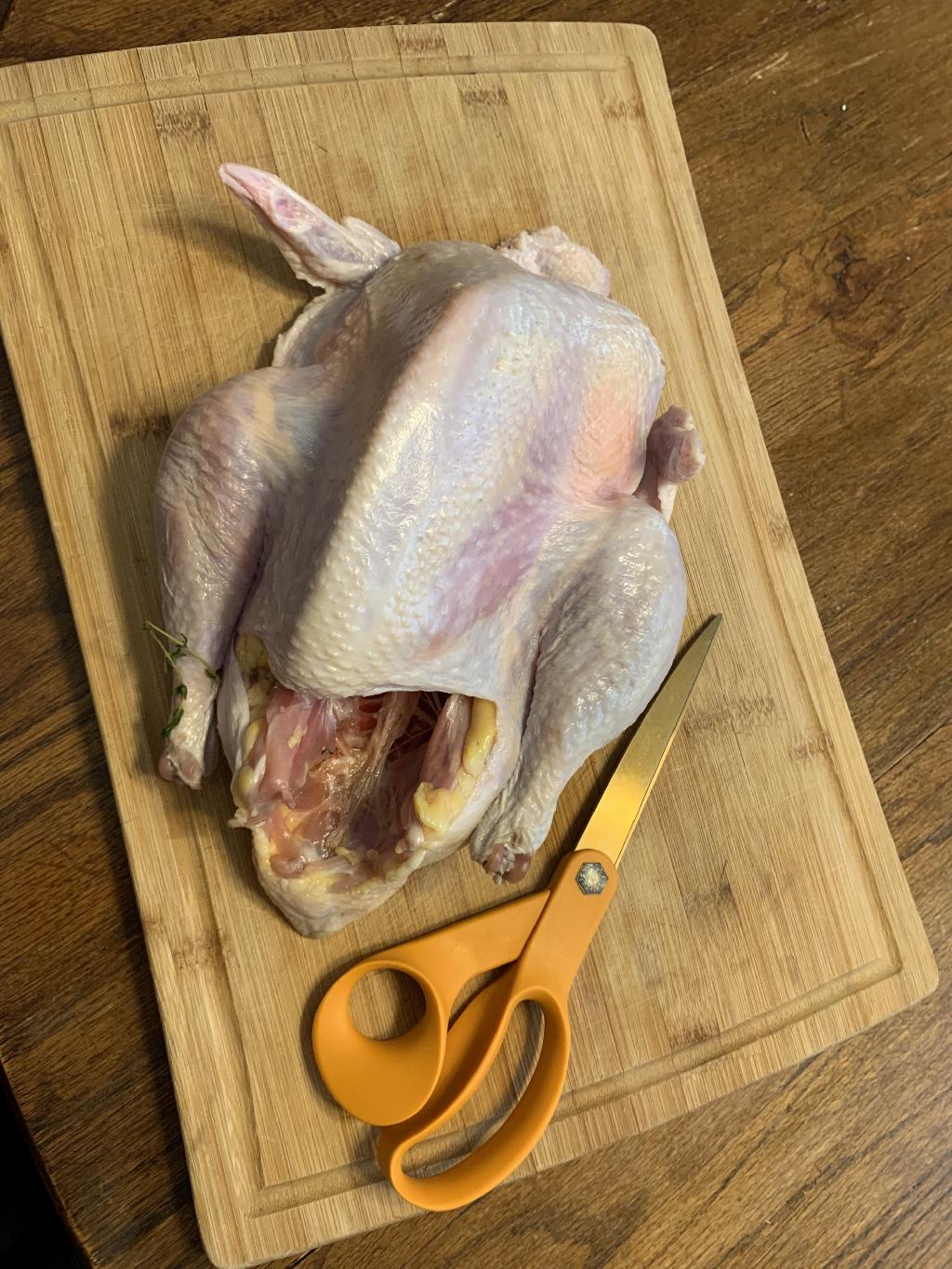
Step #11 Remove pheasant from refrigerator and place on cutting board.
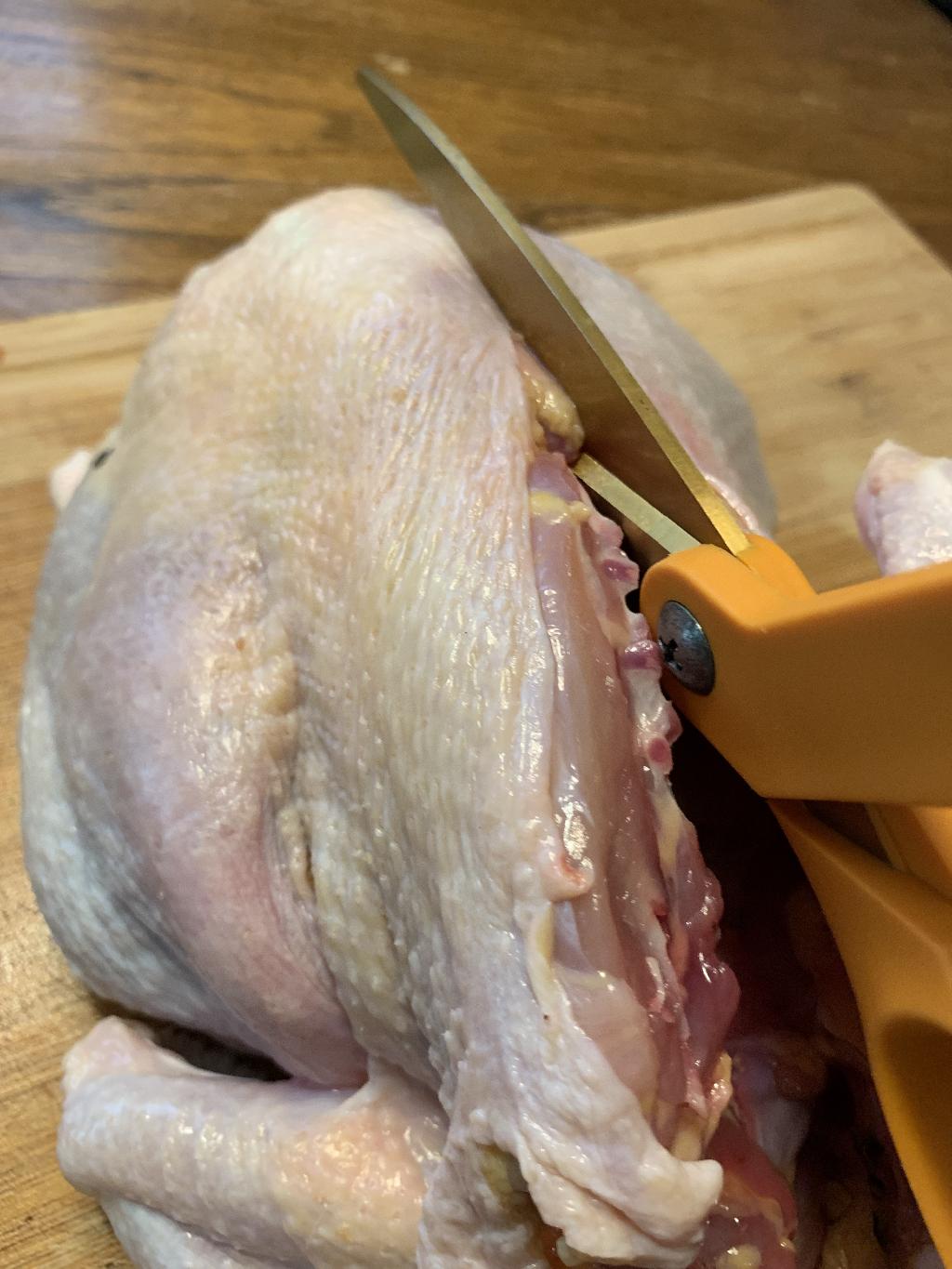
Step #12 Using sharp shears, cut the backbone out of the pheasant. Cut as close as you can to the bone, all the way down one side.
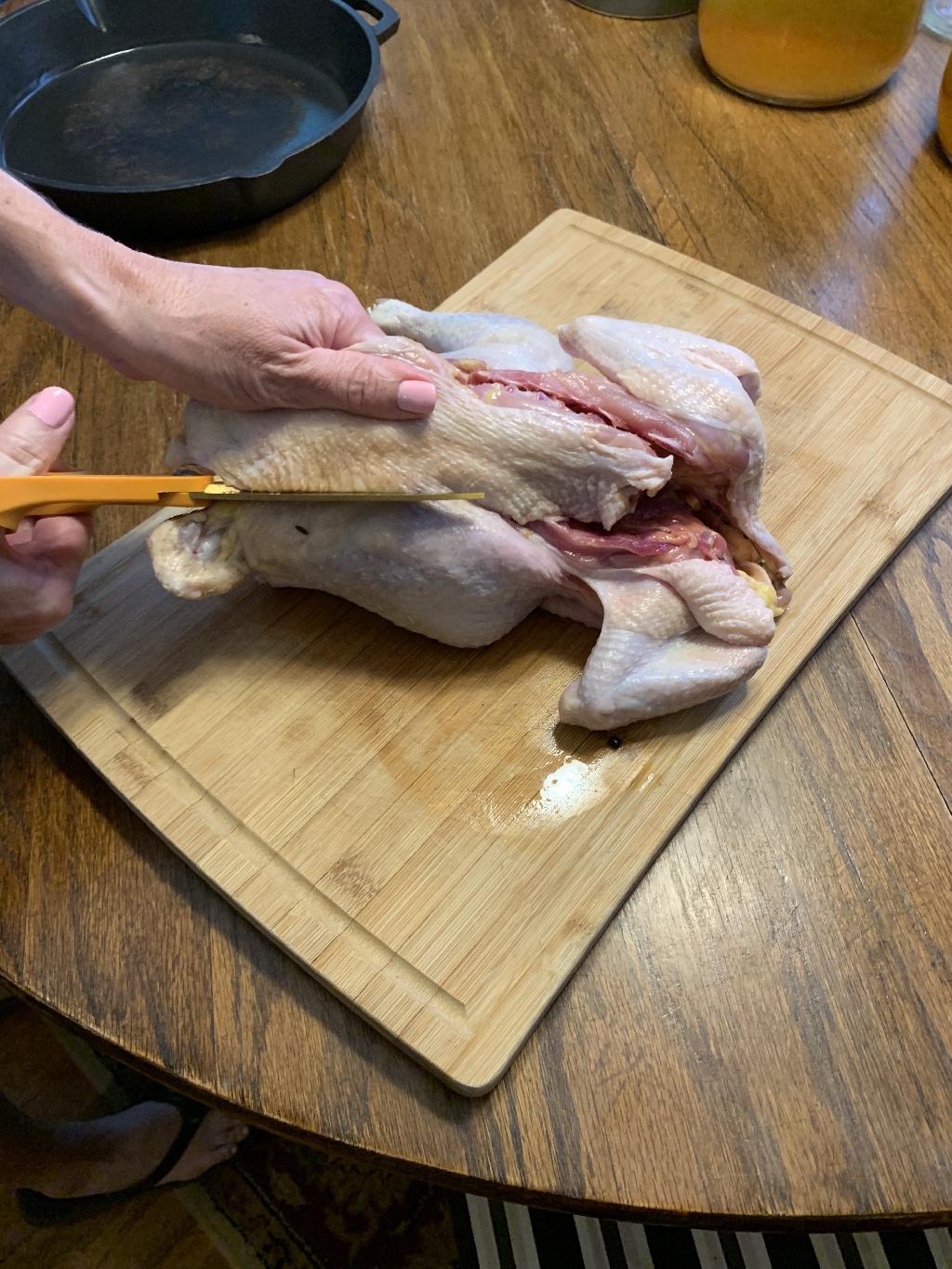
Step #13 Once you have one side done, starting cutting down the other side.
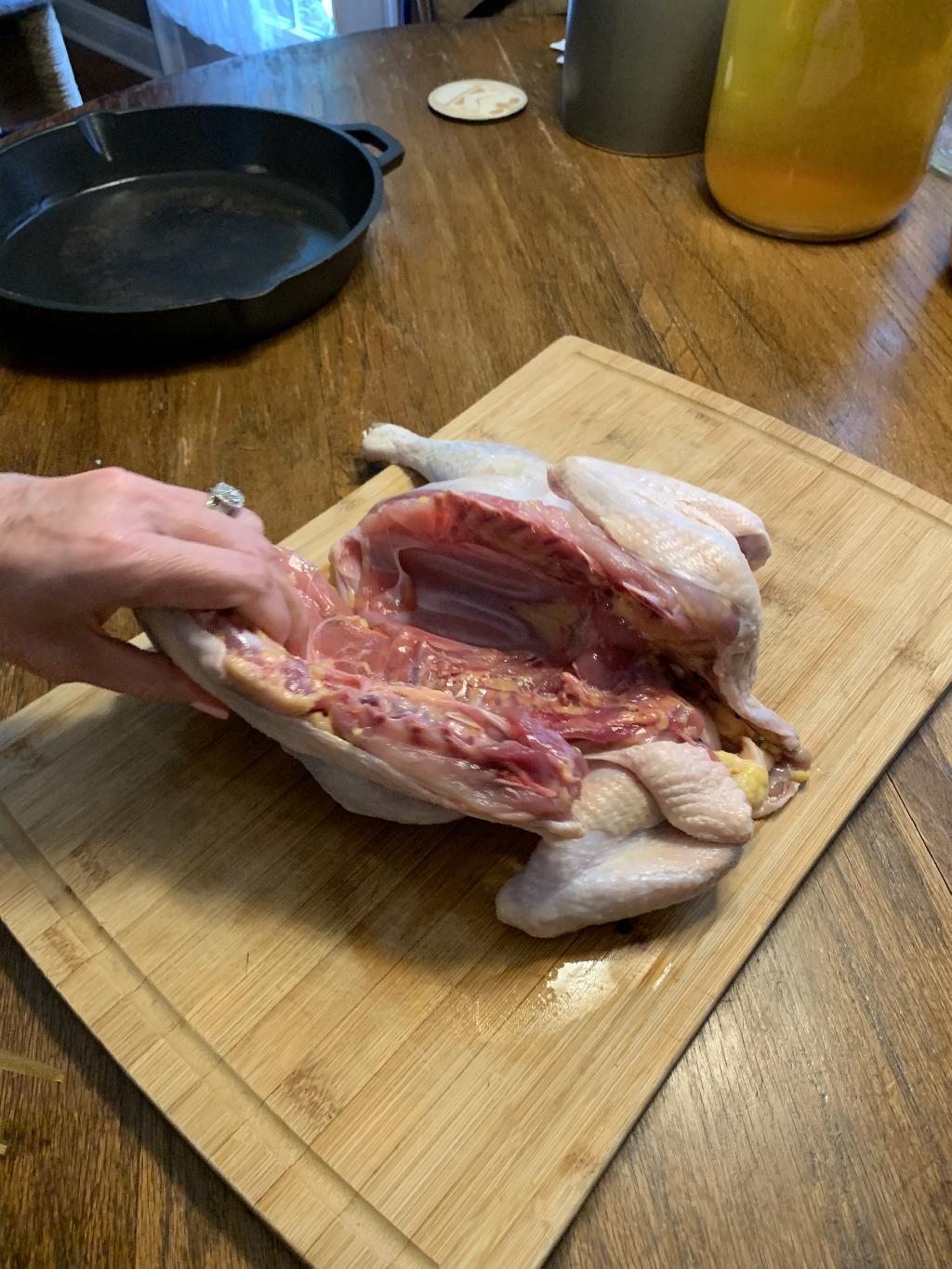
Step #14 Once you have the spine removed. Open up the cavity. The flip the bird over.
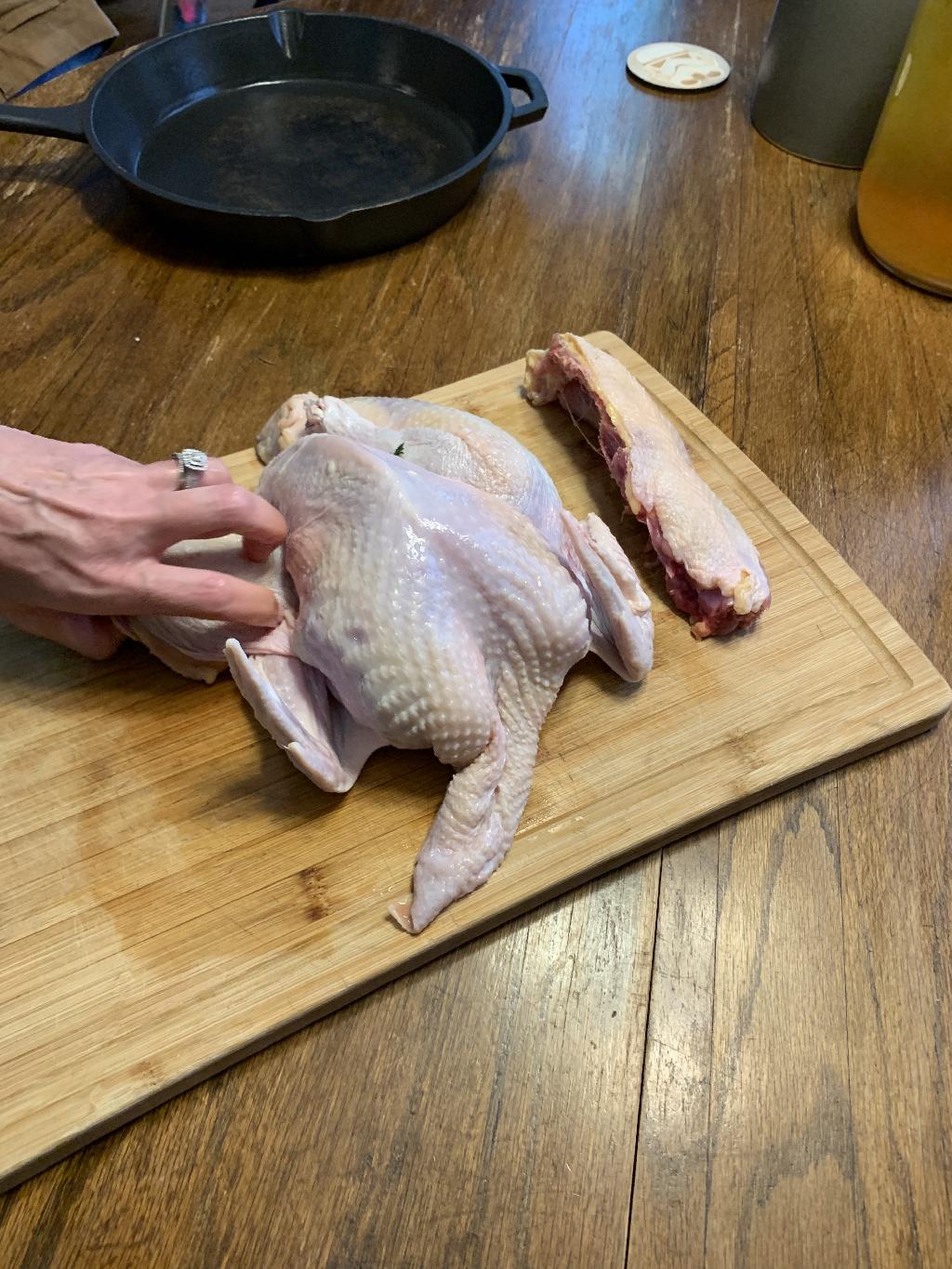
Step #15 The breast should be facing up.
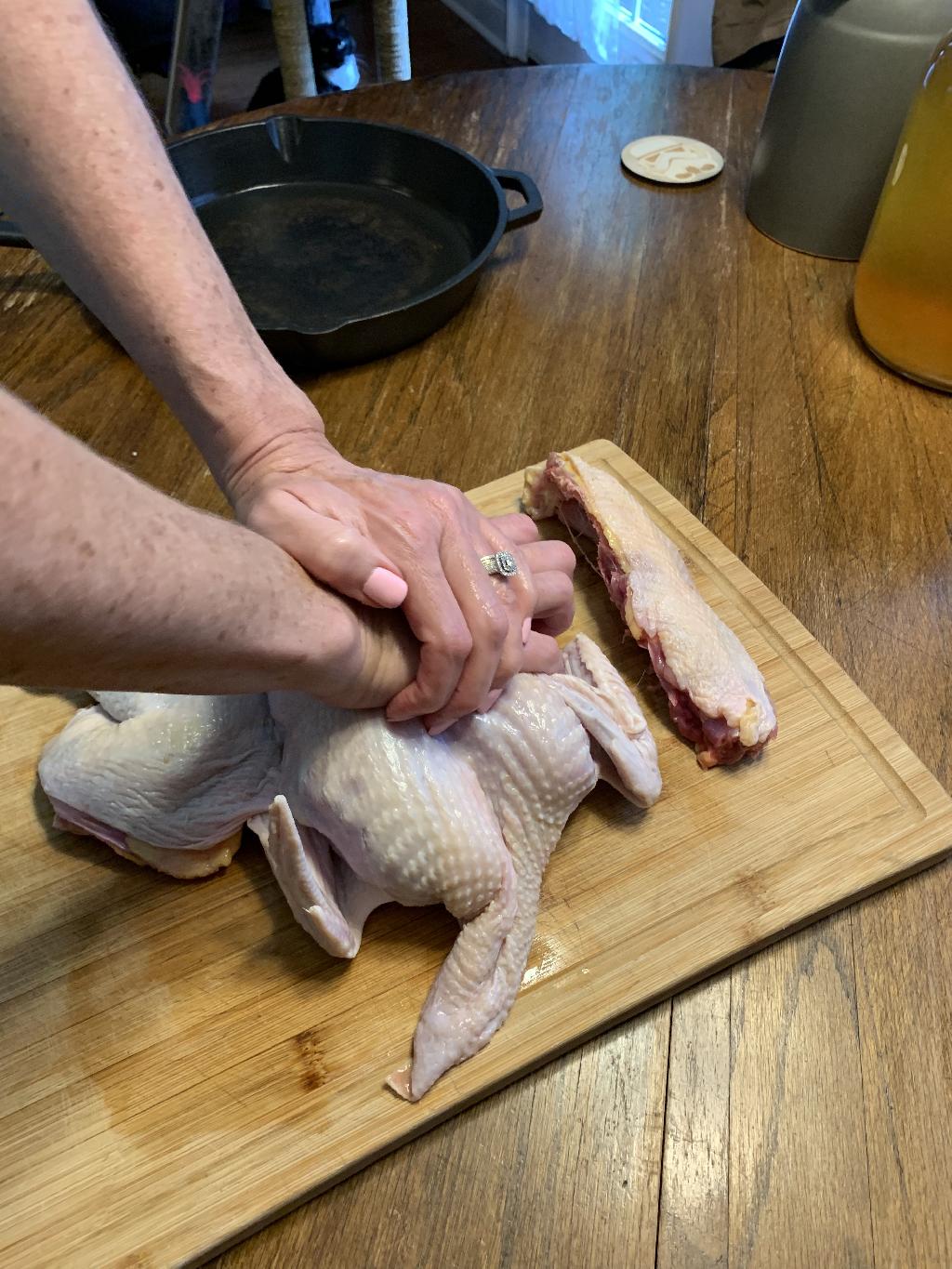
Step #16 Place both hands on the birds chest and press down until you hear the breast bone crack.
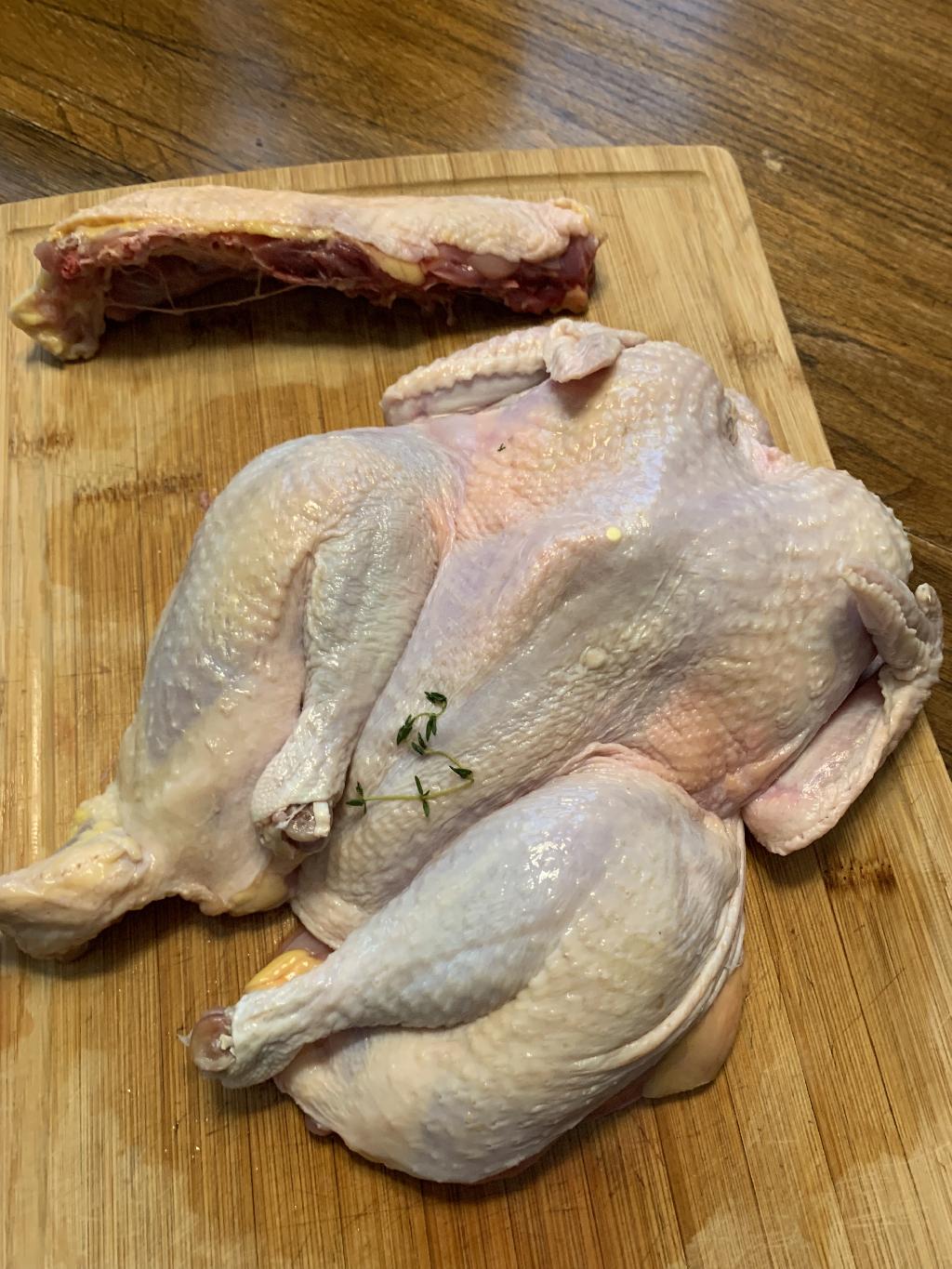
Step #17 At this point the bird should lay pretty flat on its own.
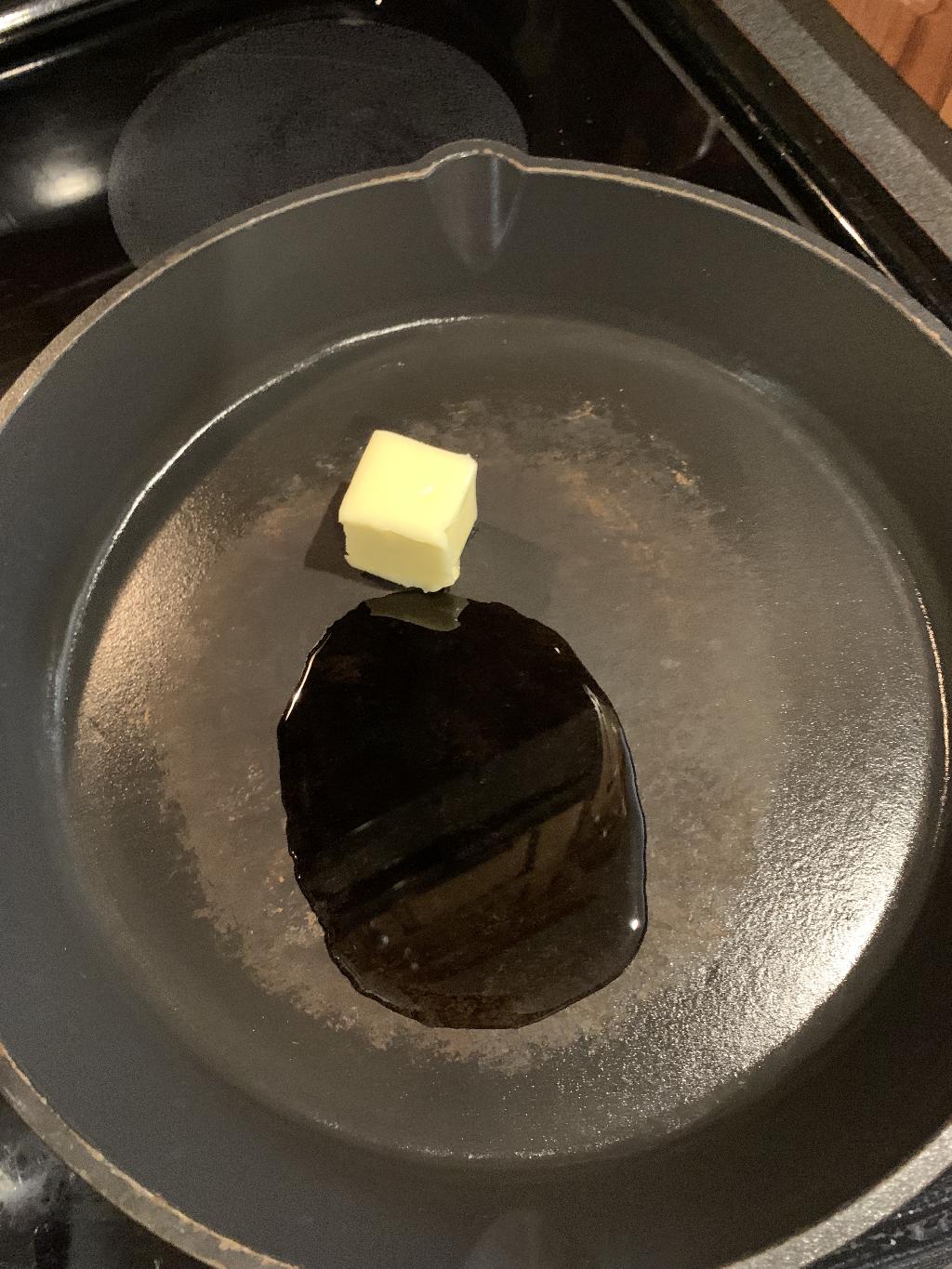
Step #18 Preheat oven or grill to 350 degrees. While the oven is getting hot, add one tablespoon of butter and one tablespoon of vegetable oil to a large cast iron skillet. Turn the heat to high.
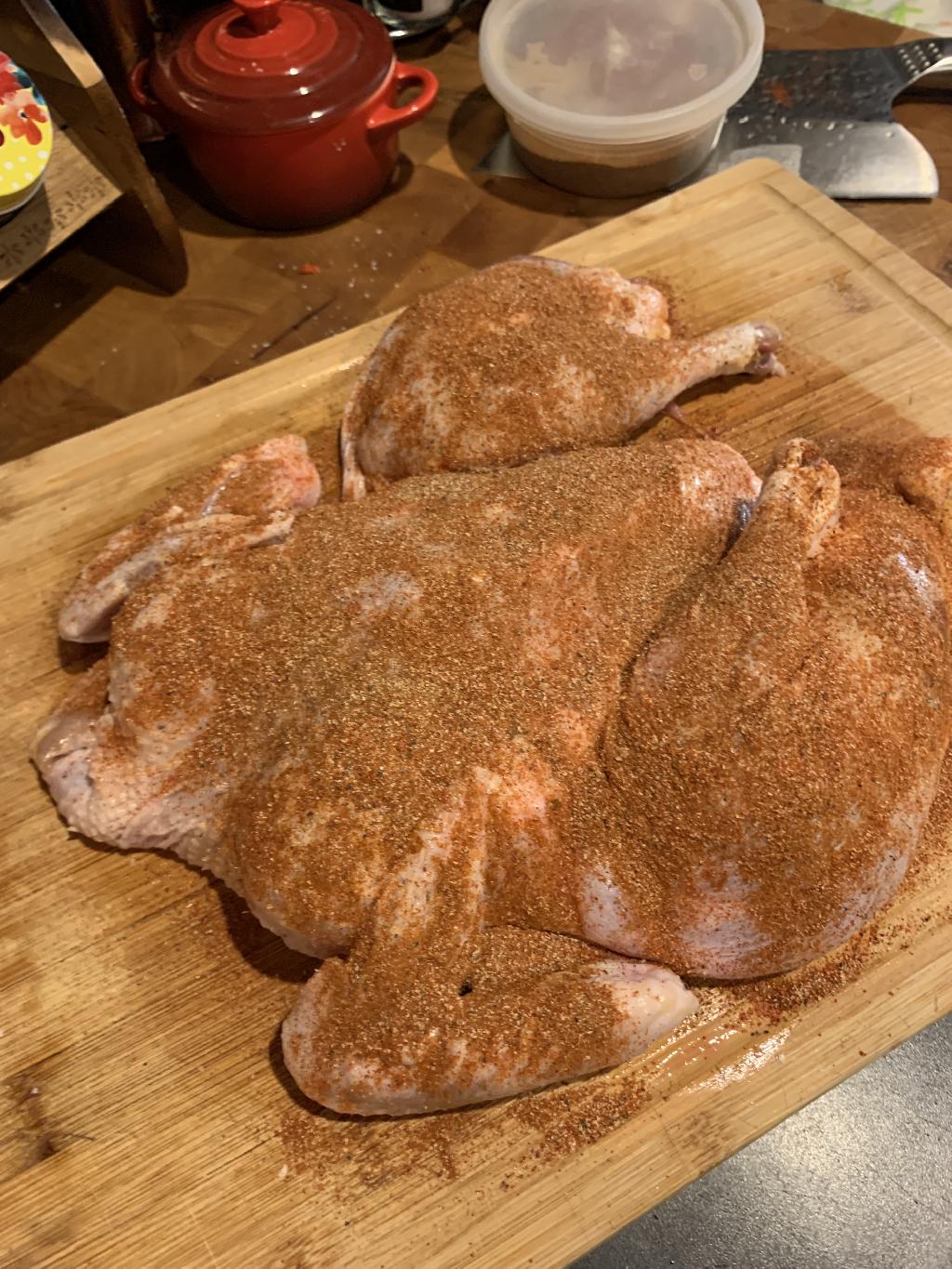
Step #19 Rub the bird all over with butter. Sprinkle with salt, then liberally coat the outside of bird with blackened seasoning mix.
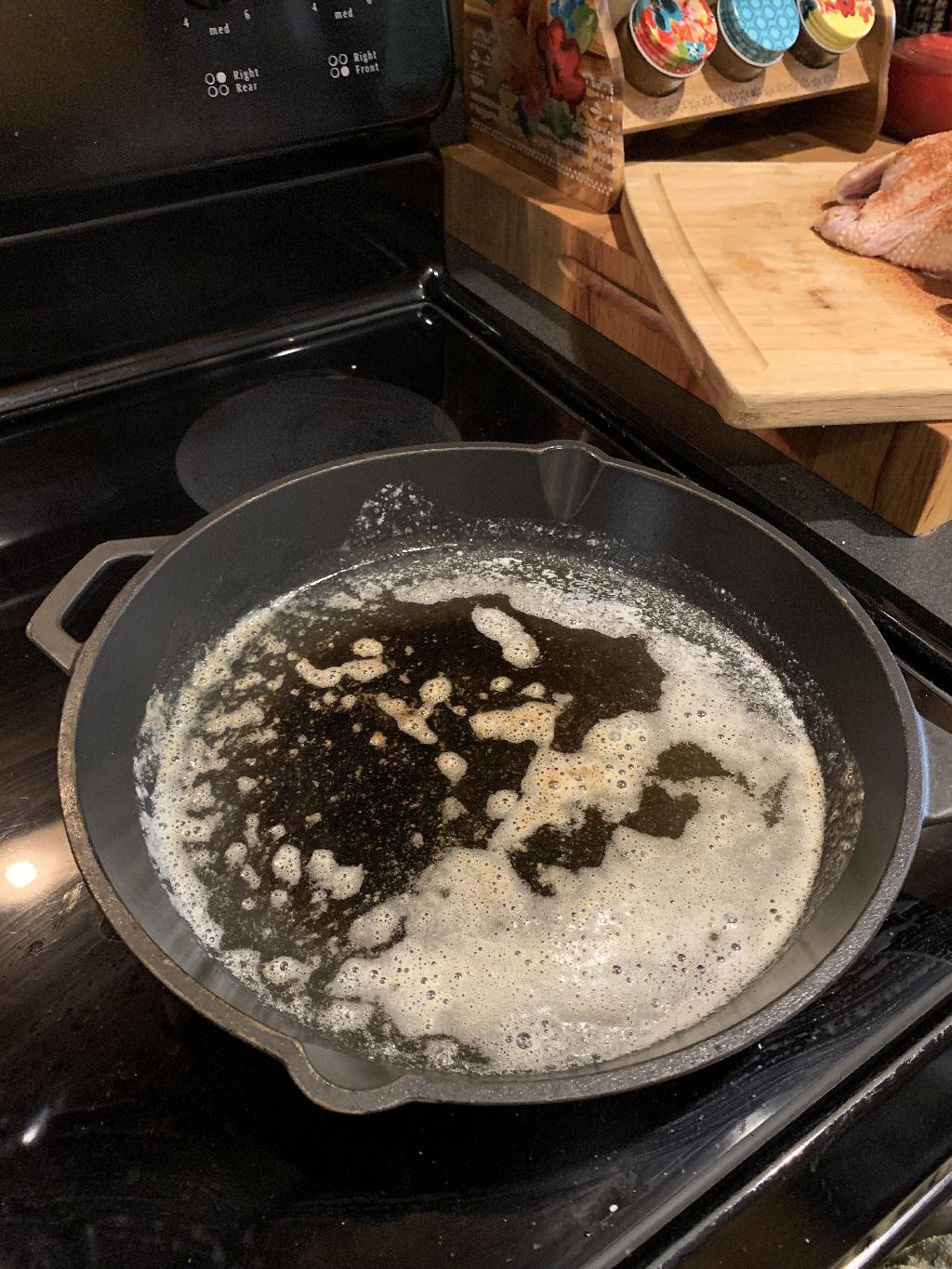
Step #20 Allow the cast iron skillet to get screaming hot, until the oil starts to smoke.
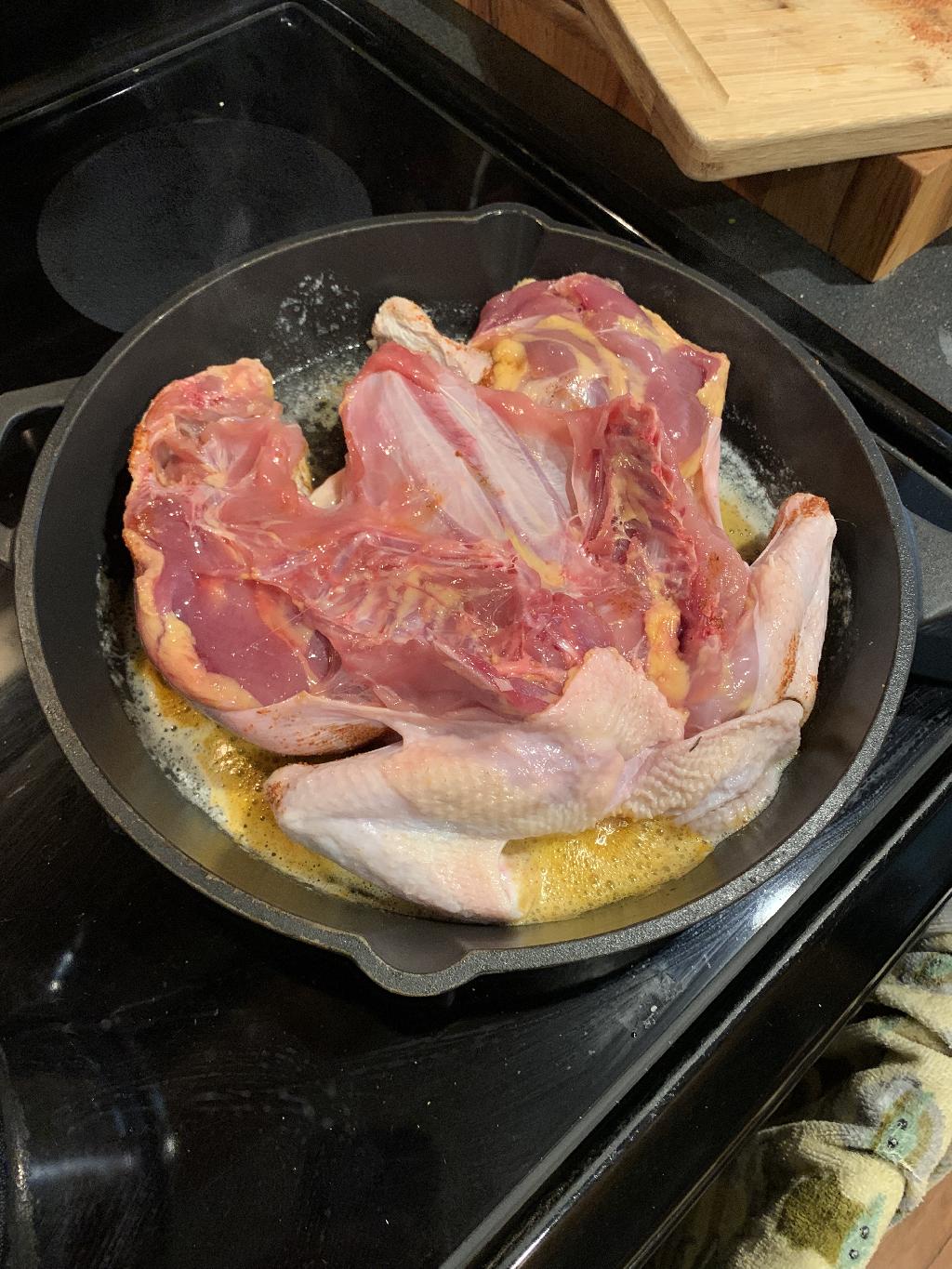
Step #21 Place pheasant breast side down in hot skillet.
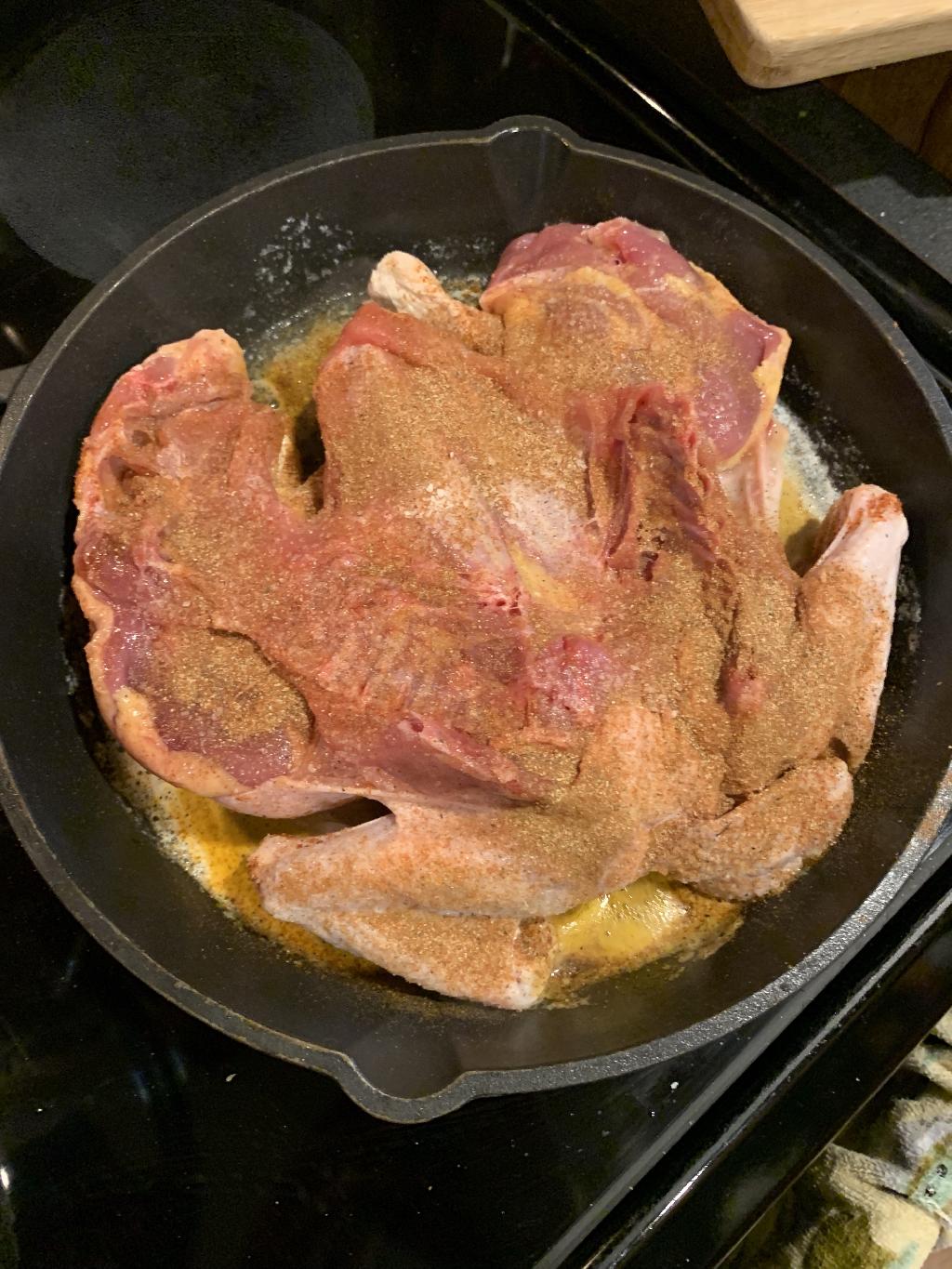
Step #22 While the breast side of the pheasant is cooking, liberally season the side facing up.
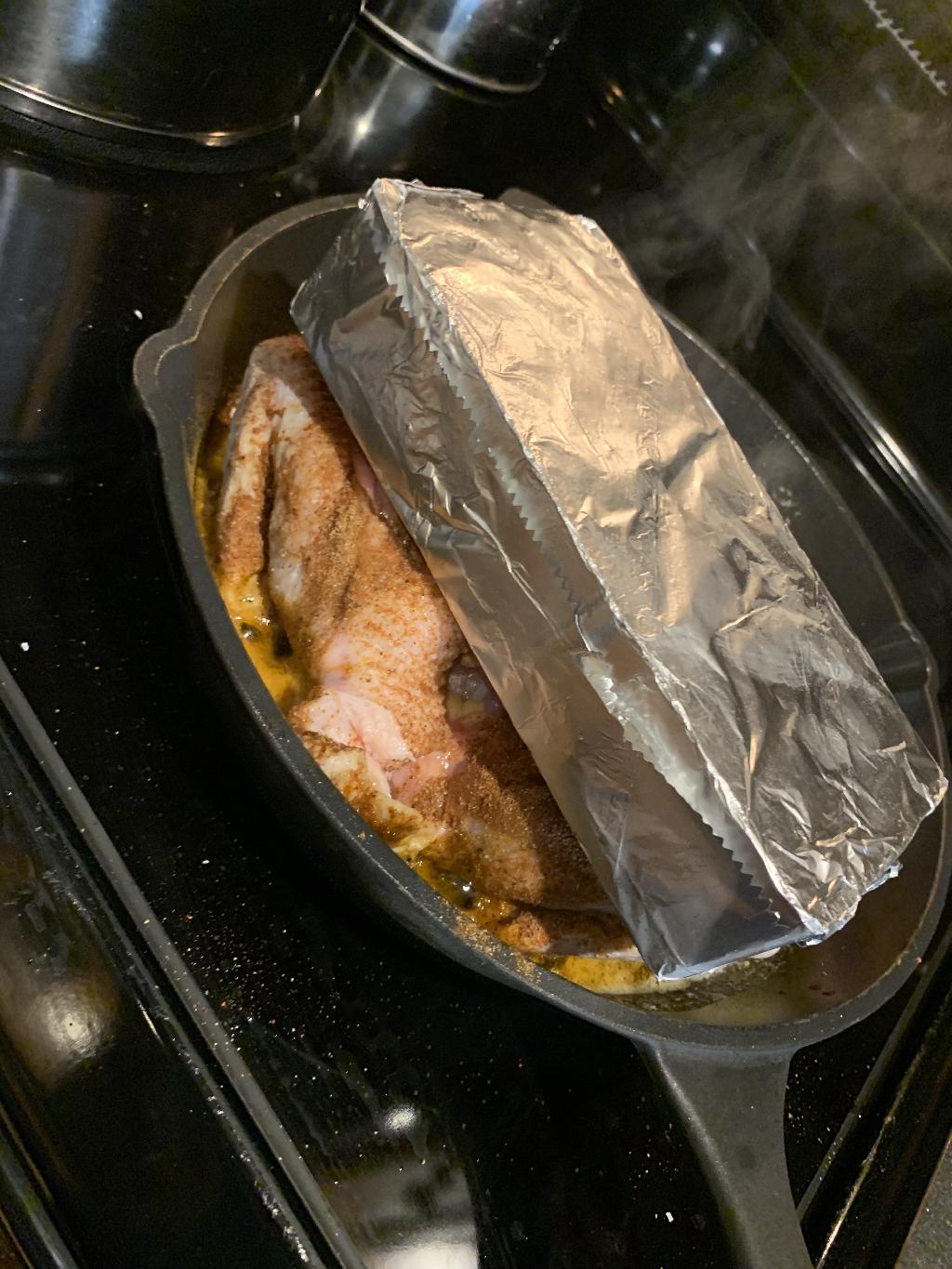
Step #23 Place your bricks on top of the pheasant to weigh it down. You want all the skin to come into contact with the hot skillet.
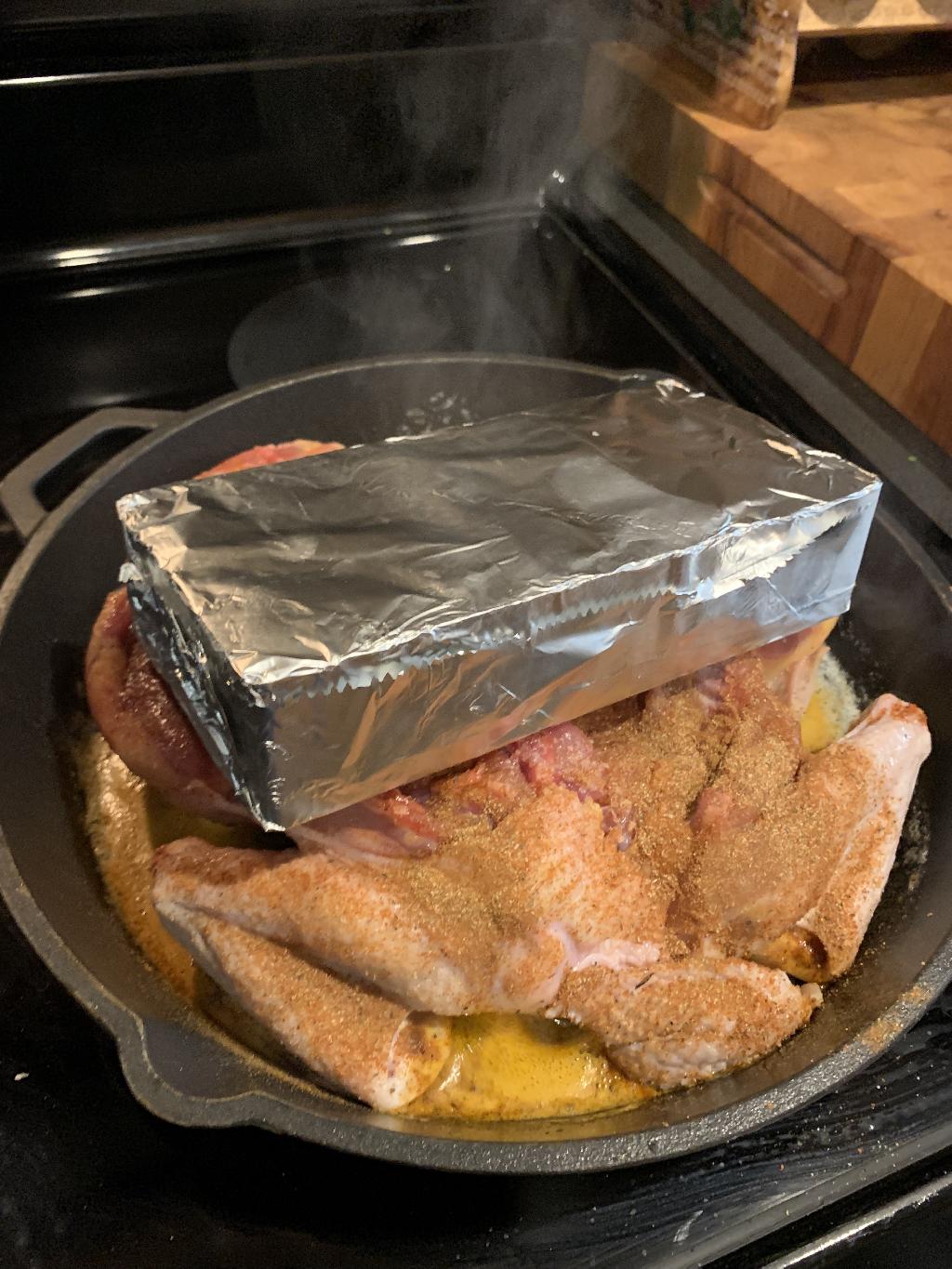
Step #24 Allow to cook 2-3 minutes while weighted down with the brick.
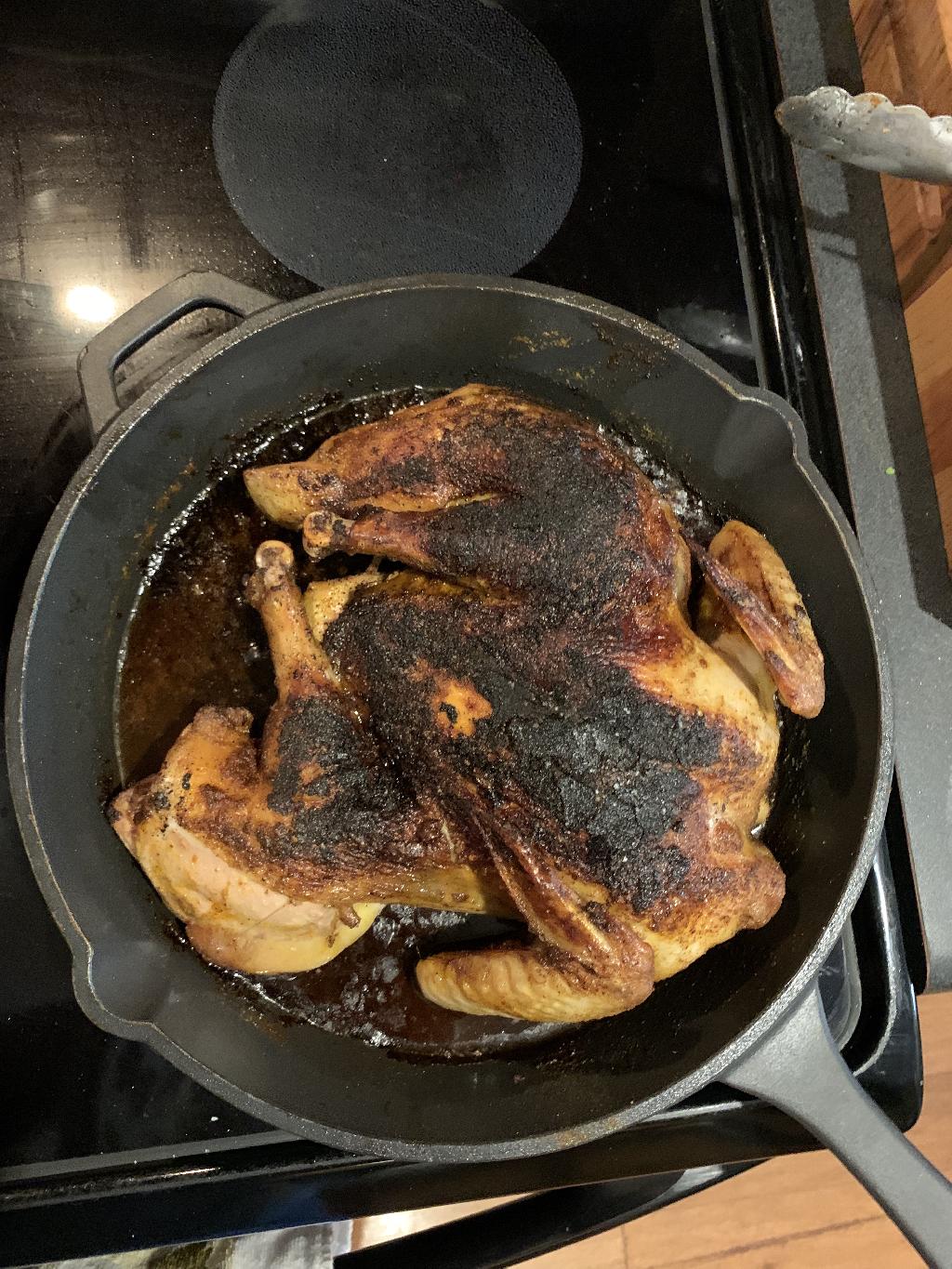
Step #25 Flip the bird over after a few minutes. It should have developed a thick black crust. Immediately move the hot skillet to the oven. Allow to cook 20-30 minutes or until internal temperature reaches about 160 degrees.
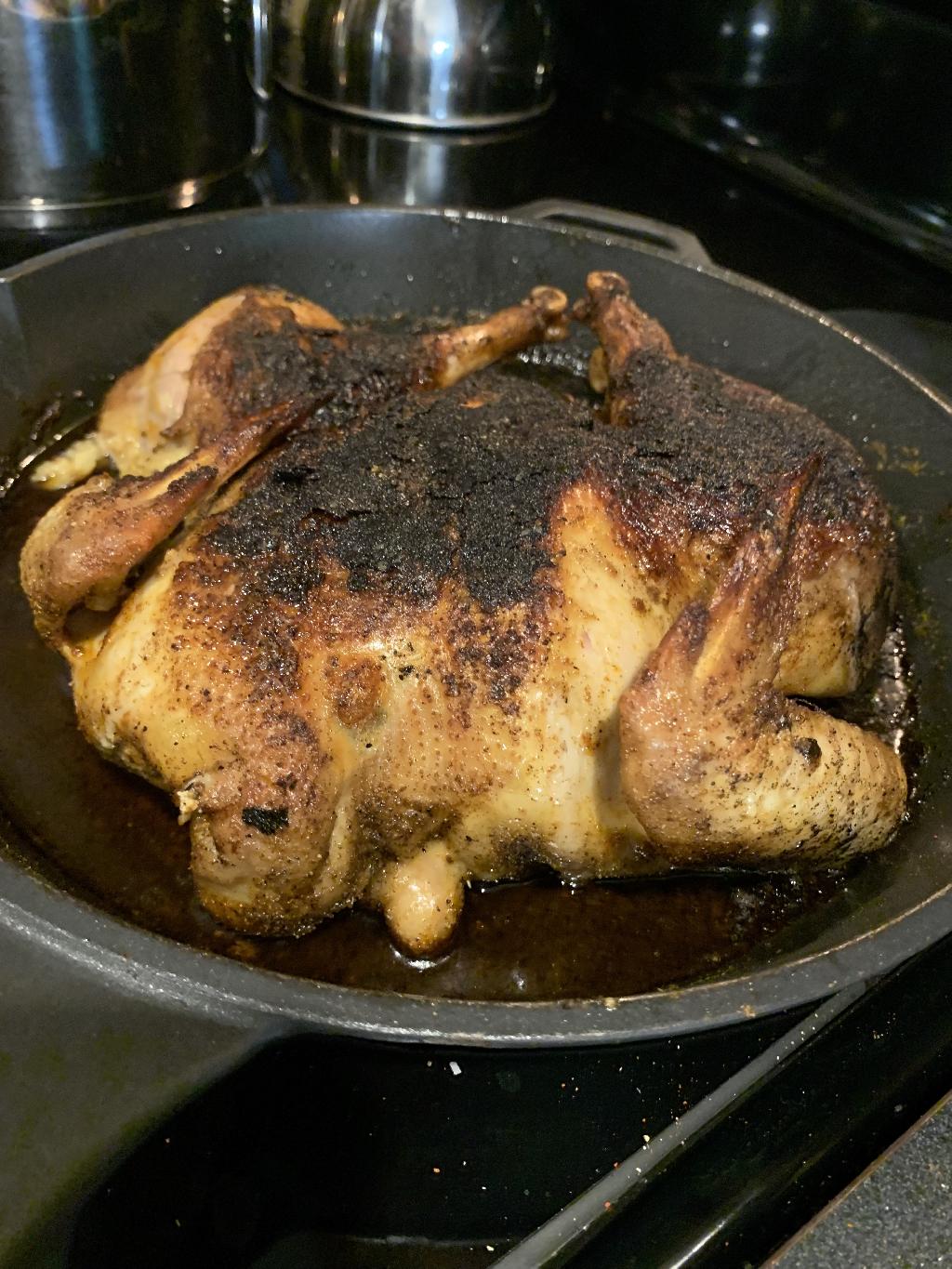
Step #26 Remove from oven and allow to rest ten to fifteen minutes on the counter. Serve with rice, cheesy grits or mashed potatoes.
Recipe Card
Blackend Bricked Pheasant
Ingredients
Pheasant Brine
Blackened Seasoning
Bricked Pheasant
Instructions
Blacked Bricked Pheasant
About the Author

Jeff Davis
Visit authors websiteYou may think cooking and recipes don’t have much to do with a website dedicated to hunting dogs ... but really, why do we hunt? Sure, we enjoy watching our dogs work in the field and being outdoors, but ultimately, hunting is about survival and feeding our families. We might as well try to do it well. I'm not a chef and definitely no food authority ... but I do like to eat and enjoy cooking. After searching for people willing to share their recipes on Gundog Central, without much success, I decided to try to do a few on my own, with my wife Tami's help. The recipes I share here are things I like to eat and have made here at home. I've tried to include step-by-step instructions with each meal describing exactly how I did it, but my method may not be best, if you decide to try a recipe posted here, please use whatever technique you think works best, I'm simply sharing how I did it. You'll see a lot of recipes where I've tried to make things from starch, when I could have just used store bought ingredients, simply because I wanted to learn how something was done. My goal is to continually update these recipes as I learn new things and techniques. These are my attempts at creating good, home cooked food, that I would like to eat! If I'm sharing it here, my family and I enjoyed it and I believe you will too.



















